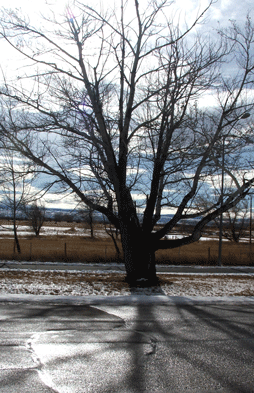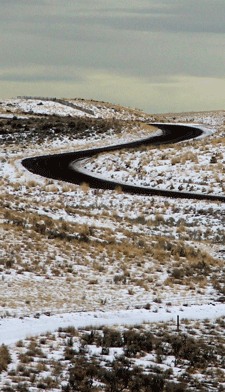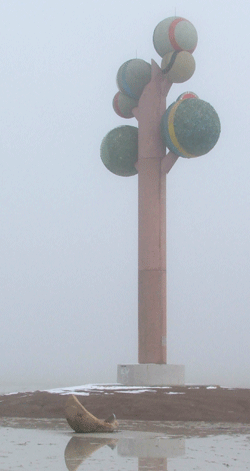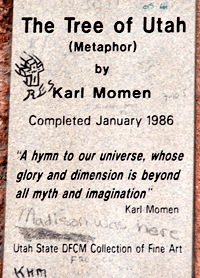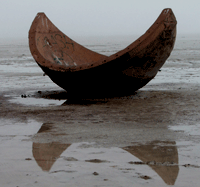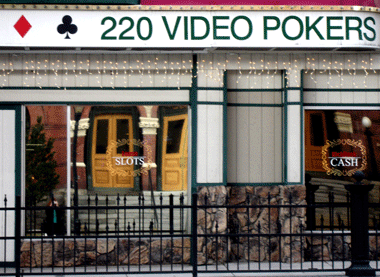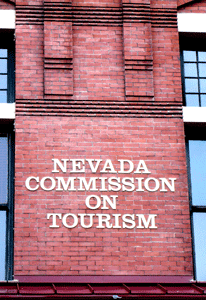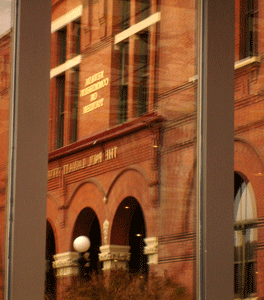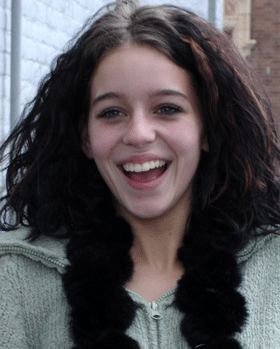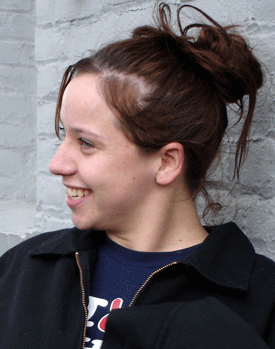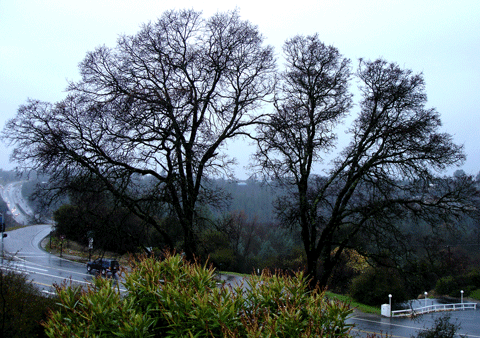Tales of a 21st Century Gypsy
December 19-22, 2005. ďDrive to Cheyenne, turn left, keep going till you get to San FranciscoĒ
I finally left Boulder on a Monday, after two weeks of waiting for van parts. I meant to leave early in the day, but didnít hit the road till after two. And then I hit Winter.
Iíve avoided traveling in winter since I started this odyssey. For the first year my van wasnít heated, and it just seemed sensible to head north in summer and south in winter. Besides, when you
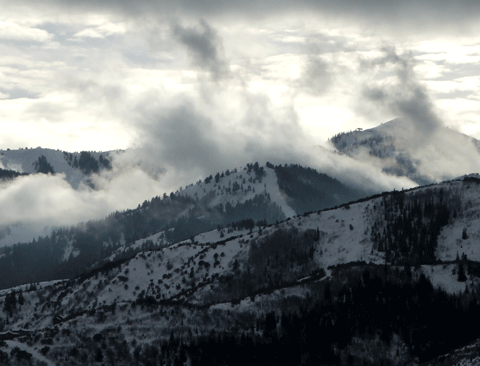
hear people say "lady, if you can't drive in the snow, why don't you just stay home? " - well that's me they're talking about. But this time I really wanted to go to San Francisco, then drive down the Pacific Coast Highway and head east from LA to go to Buses by the Bridge in Arizona in mid-January.
So I followed Davidís directions: take 25 to Cheyenne, turn left on I-80, and keep going.
It was awful.
I mean, I donít know that the road was really that bad, but I was terrified. A few miles west of Cheyenne, the sky closed in and the lines on the road were obliterated by swirls of blowing snow. Not enough to affect visibility, just enough to make it hard to distinguish the edge of the road from the start of the shoulder, or my lane from the one to the left where trucks were blowing past me.
The road climbs out of Cheyenne, and Matilda doesnít much like hills. Iíd had to rein her in in Colorado, or weíd have been barreling along at 75 (thatís way too fast for a Vanagon!), but she rarely even made it up to 50 heading out of Cheyenne. Illuminated road
